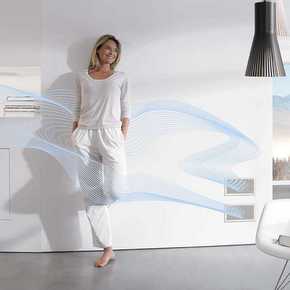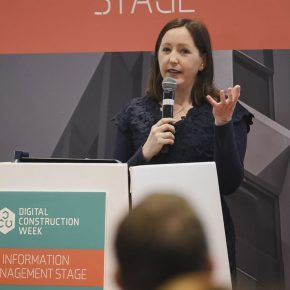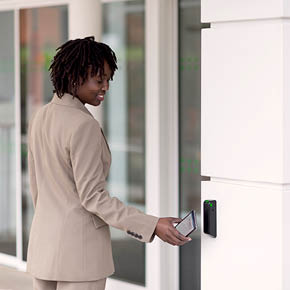
Why MVHR solutions are key to indoor air quality and health
The Importance of Indoor Air Quality
With airtightness levels in homes on the rise, Zehnder explain how MVHR (mechanical heat recovery and ventilation) solutions will help you breathe more easily.
BEAMA report: “Any future building regulations to reduce carbon emissions should be accompanied by government regulation to ensure effective and efficient design, installation, maintenance and operation of MVHR systems to reduce the impact upon human health.”
In the drive for energy efficient homes which keep the heat in and the energy bills low, today’s new builds are more highly insulated and airtight than ever before. Airtightness levels in homes built before 2010 were on average 8-10ach (air changes per hour), whereas in 2016 average airtightness levels are 5ach or lower. These buildings still need to breathe and so do the people living in them.
Fresh, clean air is vital for comfortable, healthy living and yet the average family home can create up to 17 pints of moisture per week from everyday activities such as cooking, bathing and showering. Those old enemies, condensation and mould, can still strike. Poor ventilation can also cause a build-up in indoor pollutants such as dust, pollen, household chemicals and biological materials, all potentially damaging to health.
It is well known that poor air quality can worsen respiratory and skin conditions, such as asthma and eczema, but poor indoor air quality (IAQ) is also connected with lung cancer, chronic obstructive pulmonary disease and cardiovascular disease. In recent research for BEAMA, the UK’s electro-technical industry body, Peter Howarth, Professor of Allergy and Respiratory Medicine at Southampton University, commented: “I have seen many patients with serious health conditions due to pollutants within the home and the risk of cardiovascular disease should not be dismissed. Indoor air can be more hazardous than outdoor air, particularly in young children and the elderly and where air quality is poorest.”
BEAMA report
- Indoor air can be up to 50 times more polluted than outdoors air
- 58% of people have suffered mould or condensation in their home
- More than one-in-three UK homes are at an elevated or severe risk of having polluted indoor air
- 81% of people are at risk from suffering from a respiratory or dermatological condition because of poor air quality inside their home.
Unless homes are given reliably consistent ventilation, these problems are only going to get worse, because of the Government’s commitment by law to reduce carbon emissions by 2050. Some 30% of current UK carbon emissions relate to domestic buildings. BEAMA’s report (‘The Future of Indoor Air Quality in UK Homes and its Impact on Health’, published September 2015) states that if there is no additional IAQ intervention, by 2050:
- Existing building regulations have the potential to increase indoor pollutant levels to the upper end (and in some cases well above) World Health Organisation recommended limits
- There will be an 80% increase in asthma sufferers
- TVOC (total volatile organic compounds) concentrations emitted into indoors air will be up to 60% above WHO 24-hour limits
- NO2 (nitrogen dioxide) concentrations will be up to 30% above WHO annual limits
All this means that ventilating a home is more important than ever. It is true that simply opening windows or doors can bring outdoors air in, but this has real disadvantages in modern airtight buildings when compared with the alternative of mechanical ventilation.
Opening windows or doors for ventilation
- Is often not possible because of the weather
- Can present security issues
- Can bring in unwanted noise from outside
- Is not filtered before entering the building, so brings in air contaminants
- Does not precisely control airflow in the building
- Imbalances ventilation, refreshing some rooms much more than others
In contrast, mechanical ventilation systems deliver filtered, clean air into a home and balance this precisely with the extraction of moist or dirty air. The BEAMA report, prepared by Prof. Hazim B Awbi of the University of Reading’s School of Built Environment, concluded:
- There should be a legal requirement for new homes, and guidance for retrofitted homes, to have an air exchange rate of at least 0.5/hour, to help protect human health
- The standardised fitting of effective continuous mechanical ventilation, preferably with heat recovery (MVHR), is the most cost-effective solution for achieving this exchange rate whilst satisfying energy efficiency requirements
Advantages of MVHR
- Extracts dirty air and replaces it with clean, fresh air – regularly and consistently
- Extracts air from moist rooms like bathrooms and kitchens
- Introduces a balanced amount of fresh air into habitable spaces
- Delivers consistently comfortable and healthy indoor air quality all year round, regardless of variations in the weather
- Recovers up to 90 per cent of heat that would otherwise be lost through the ventilation process (even modern buildings can lose up to 25% of their heat through uncontrolled ventilation and air leakage)
MVHR Best Practice Guides
Zehnder has launched a new series of MVHR Best Practice Guides, published as three ebooks
Design and Product Specification
Installation and Commissioning
Handover and Maintenance
Zehnder Group UK Ltd
Unit 4, Watchmoor Point
Camberley
Surrey
GU15 3AD
UK
01276 605800
Visit Supplier's page
Latest news

8th April 2025
First look at industry speakers for GEO Business 2025
GEO Business, the UK’s premier geospatial event, is set to return to ExCeL London on 4 – 5 June 2025, bringing together the brightest minds in the industry.
Posted in Articles, Building Industry Events, Building Industry News, Building Products & Structures, Building Services, Exhibitions and Conferences, Information Technology, Innovations & New Products, Restoration & Refurbishment, Retrofit & Renovation, Seminars
8th April 2025
Digital Construction Week 2025 announces first wave of industry-leading speakers
Digital Construction Week (DCW), the UK’s premier event for digital innovation in the built environment, is set to return to ExCeL London on 4 – 5 June 2025.
Posted in Articles, BIM, Infrastructure & CAD Software, Building Industry Events, Building Industry News, Building Products & Structures, Building Services, Building Systems, Civil Engineering, Exhibitions and Conferences, Hard Landscaping & Walkways, Health & Safety, Information Technology, Innovations & New Products, Landscaping, Retrofit & Renovation, Seminars
7th April 2025
Abloy UK provides bespoke access control solution for CPA Group’s Lanarkshire HQ
Abloy UK has supplied CPA Group with its PROTEC2 CLIQ solution to streamline access control and protect assets at its headquarters in Shotts, Lanarkshire.
Posted in Access Control & Door Entry Systems, Architectural Ironmongery, Articles, Building Industry News, Building Products & Structures, Building Services, Case Studies, Doors, Facility Management & Building Services, Health & Safety, Restoration & Refurbishment, Retrofit & Renovation, Security and Fire Protection
7th April 2025
ASSA ABLOY EMEIA: A new generation of reader is added to the Aperio digital access family
There is now a way to control access digitally, effectively and wire-free, thanks to ASSA ABLOY EMEIA…
Posted in Access Control & Door Entry Systems, Architectural Ironmongery, Articles, Building Industry News, Building Products & Structures, Building Services, Doors, Facility Management & Building Services, Health & Safety, Information Technology, Innovations & New Products, Posts, Retrofit & Renovation, Security and Fire Protection
 Sign up:
Sign up: